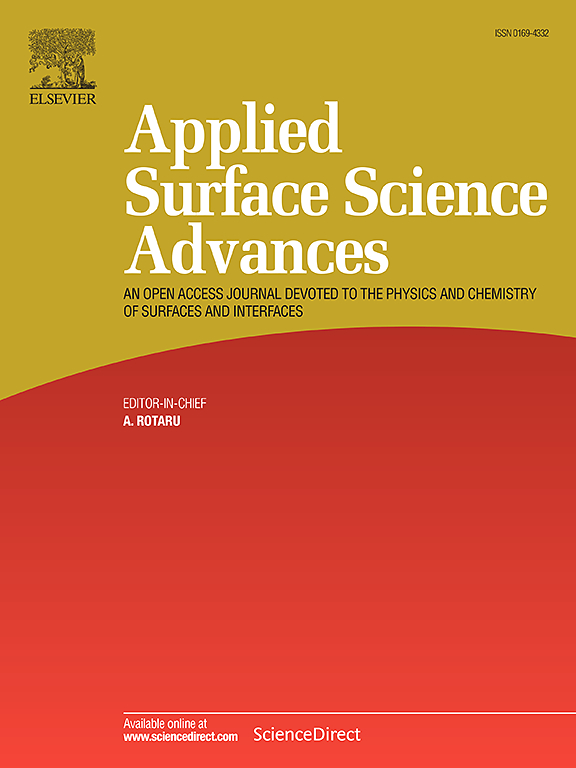A comparative study on spin-to-charge and charge-to-spin conversion using modulated Dirac surface states of Bi2Se3
IF 7.5
Q1 CHEMISTRY, PHYSICAL
引用次数: 0
Abstract
Understanding the mechanisms of spin-charge interconversion is a major challenge in modern spintronics. In this study, we investigate the complex charge-to-spin conversion (CSC) and spin-to-charge conversion (SCC) using the modulated Dirac surface state of Bi2Se3 thin films. The role of Bi2Se3, which possesses a spin-momentum locked Dirac surface state (DSS), in the CSC and SCC processes is explored using spin-torque ferromagnetic resonance (ST-FMR) and terahertz emission methods, respectively. Distinct differences in spin Hall angles are observed in ultrathin Bi2Se3 films on HfO2-x, compared to those on a typical substrate, indicating the dependence on the spin-orbit interaction. Specifically, the interaction of d-orbital of the unbound hafnium in HfO2-x and Bi2Se3 enhances the spin-orbit interaction. In addition, we found that the complex interaction between the surface and bulk states affects the spin diffusion length and the spin current injection region. The influence of the surface state on the conversion processes decreases as the Bi2Se3 film thickness increases, resulting in differing efficiency for SCC and CSC due to the asymmetrical stack structure. The findings using Bi2Se3 ultrathin films enhance our understanding of DSS-related CSC and SCC mechanisms, paving the way for performance optimization of future spintronic devices.
利用 Bi2Se3 的调制狄拉克表面态进行自旋到电荷和电荷到自旋转换的比较研究
了解自旋电荷相互转换的机制是现代自旋电子学的主要挑战。在本研究中,我们利用调制Dirac表面态研究了Bi2Se3薄膜的复合电荷-自旋转换(CSC)和自旋-电荷转换(SCC)。采用自旋转矩铁磁共振(ST-FMR)和太赫兹发射方法分别探讨了具有自旋动量锁定狄拉克表面态(DSS)的Bi2Se3在CSC和SCC过程中的作用。在HfO2-x上的超薄Bi2Se3薄膜与在典型衬底上的薄膜相比,自旋霍尔角有明显的差异,这表明了自旋轨道相互作用的依赖性。具体来说,HfO2-x和Bi2Se3中未结合的铪的d轨道相互作用增强了自旋轨道相互作用。此外,我们发现表面态和体态之间的复杂相互作用影响了自旋扩散长度和自旋电流注入区域。随着Bi2Se3膜厚度的增加,表面状态对转换过程的影响减小,由于不对称的堆叠结构导致SCC和CSC的效率不同。使用Bi2Se3超薄膜的研究结果增强了我们对dss相关CSC和SCC机制的理解,为未来自旋电子器件的性能优化铺平了道路。
本文章由计算机程序翻译,如有差异,请以英文原文为准。
求助全文
约1分钟内获得全文
求助全文

 求助内容:
求助内容: 应助结果提醒方式:
应助结果提醒方式:


